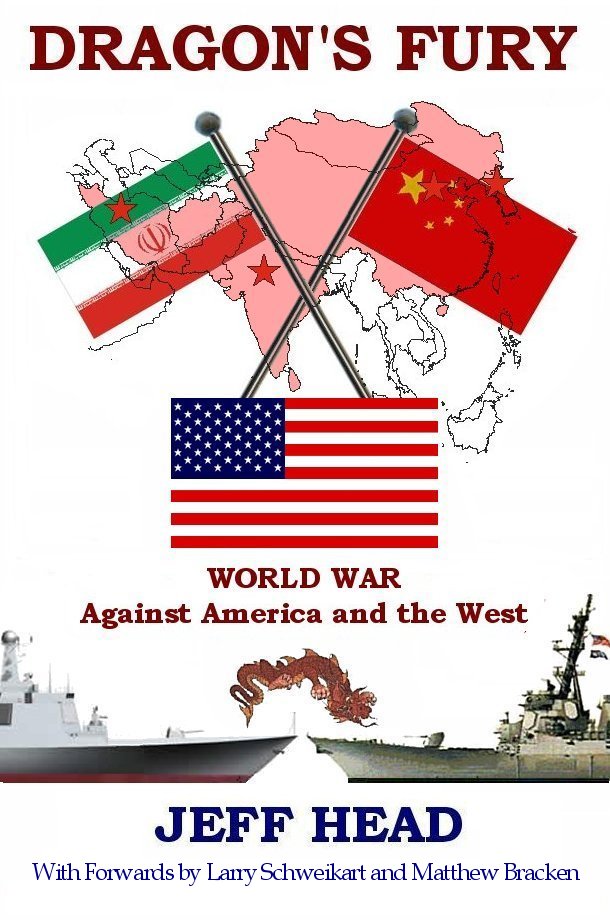 |
|
|
|
Tu-95 MS Russian Bomber Last updated: January 1, 2016 - What's in the Box 
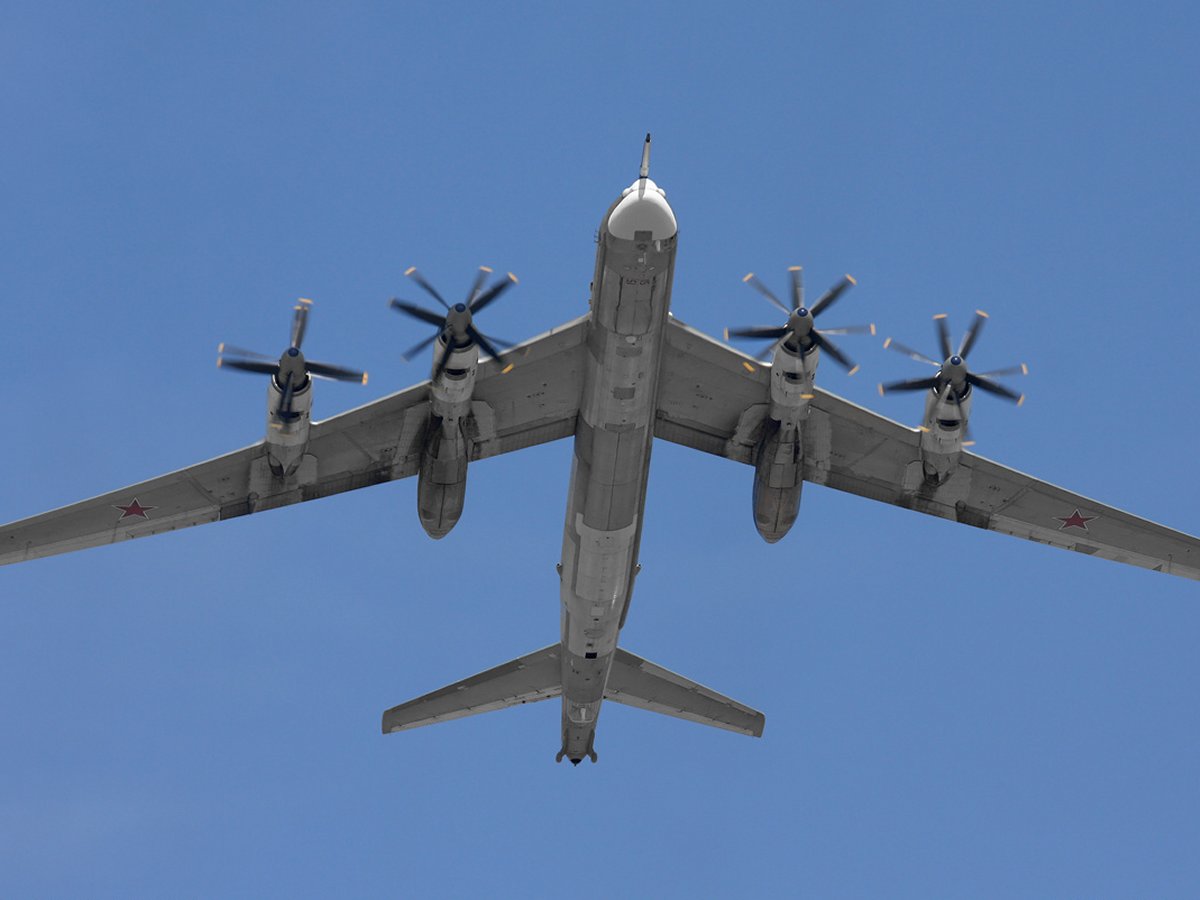
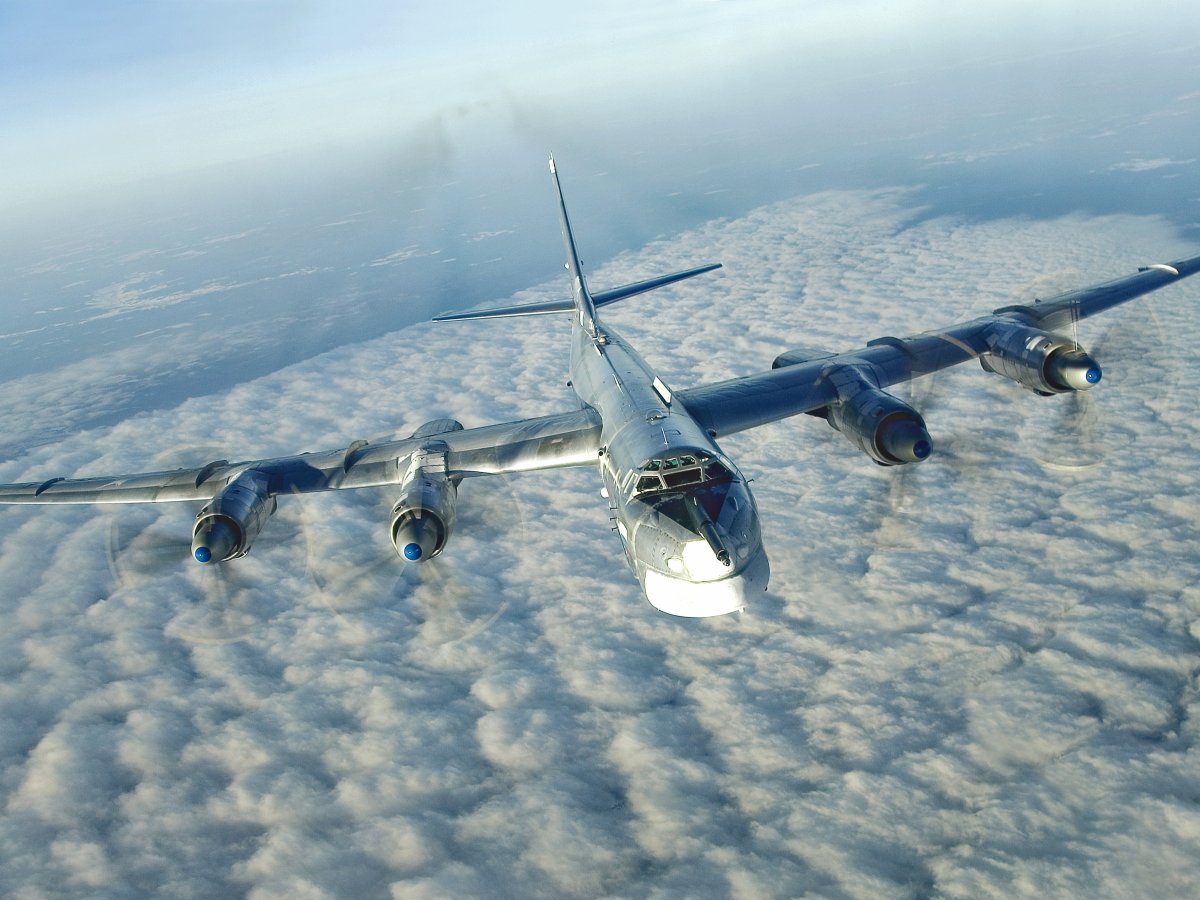

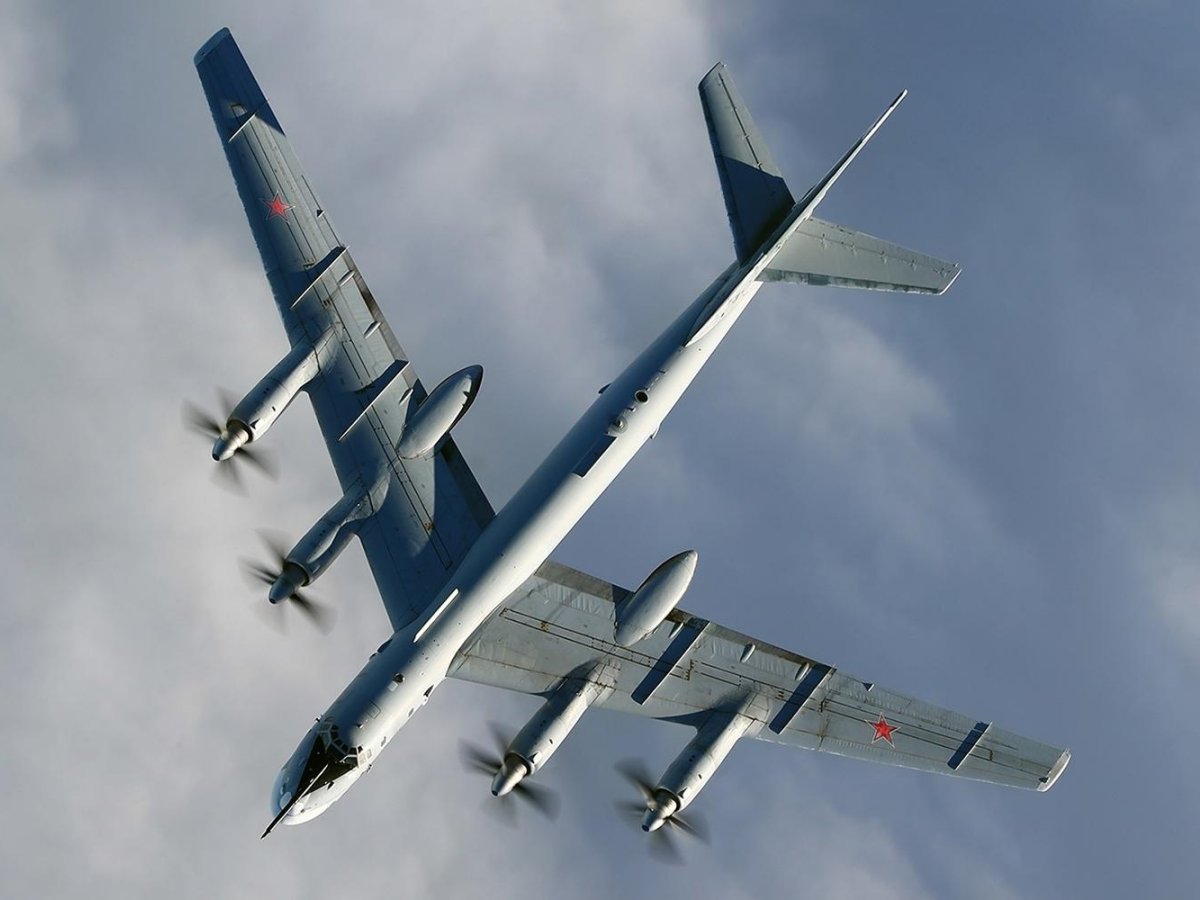
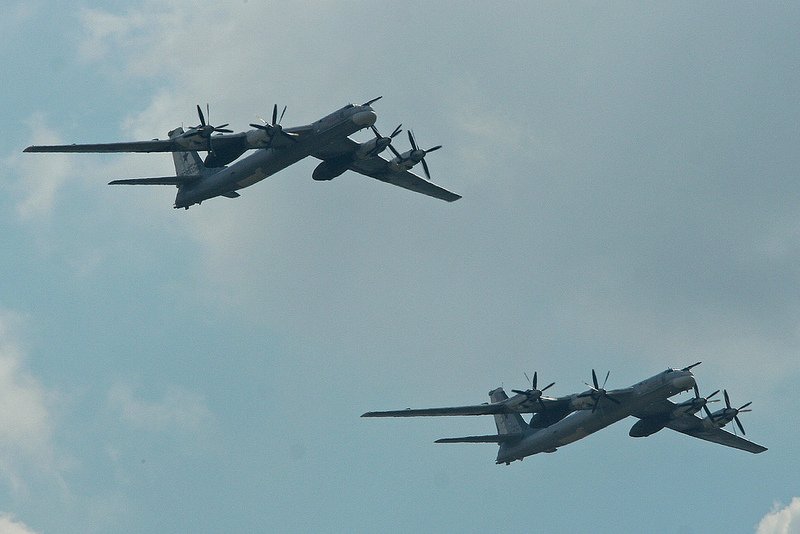
Introduction - Tupulov Tu-95 MS Fighter/Bomber The Tu-95 is the longest in service Russian aircraft in their inventry. Like the US Air Force B-52 bomber, the Tu-95 design was so good and so versatile, that althugh it was designed and put into service in 1956, it is still in service today, approaching 60 years later. To speak to how god and long lasting this aircraft is, one need only note the various US aircraft that have been used to intercept the Tu-95 over the years as it has been used to shadow US Navy forces, or to skirt the edges of, and some times enter into US (or its allies) air space. The list reads like a who's who in US aircraft inventory. There was the F-8 Crusader, the F-102 Delta Dart and the F-106 Delta Dagger who began intercepting the Bear in the 1950s.
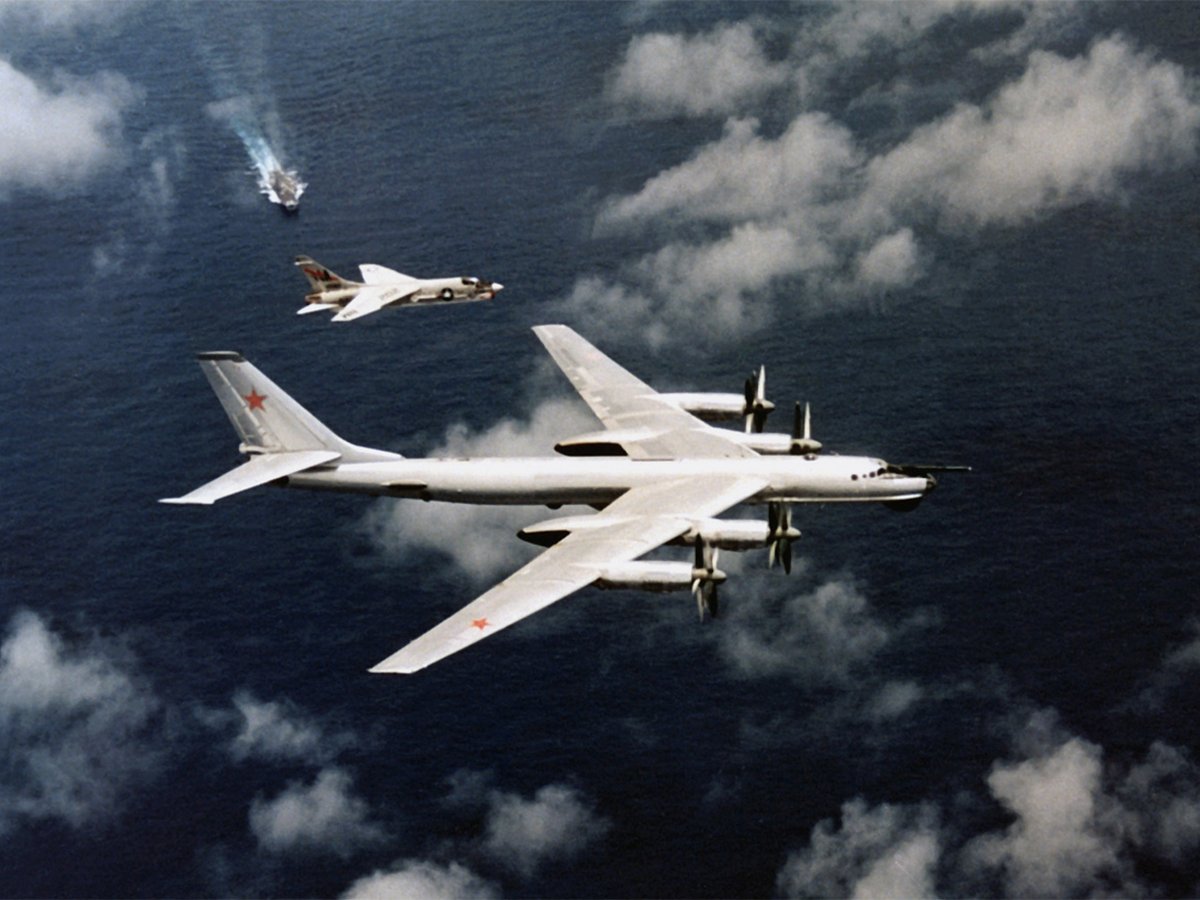
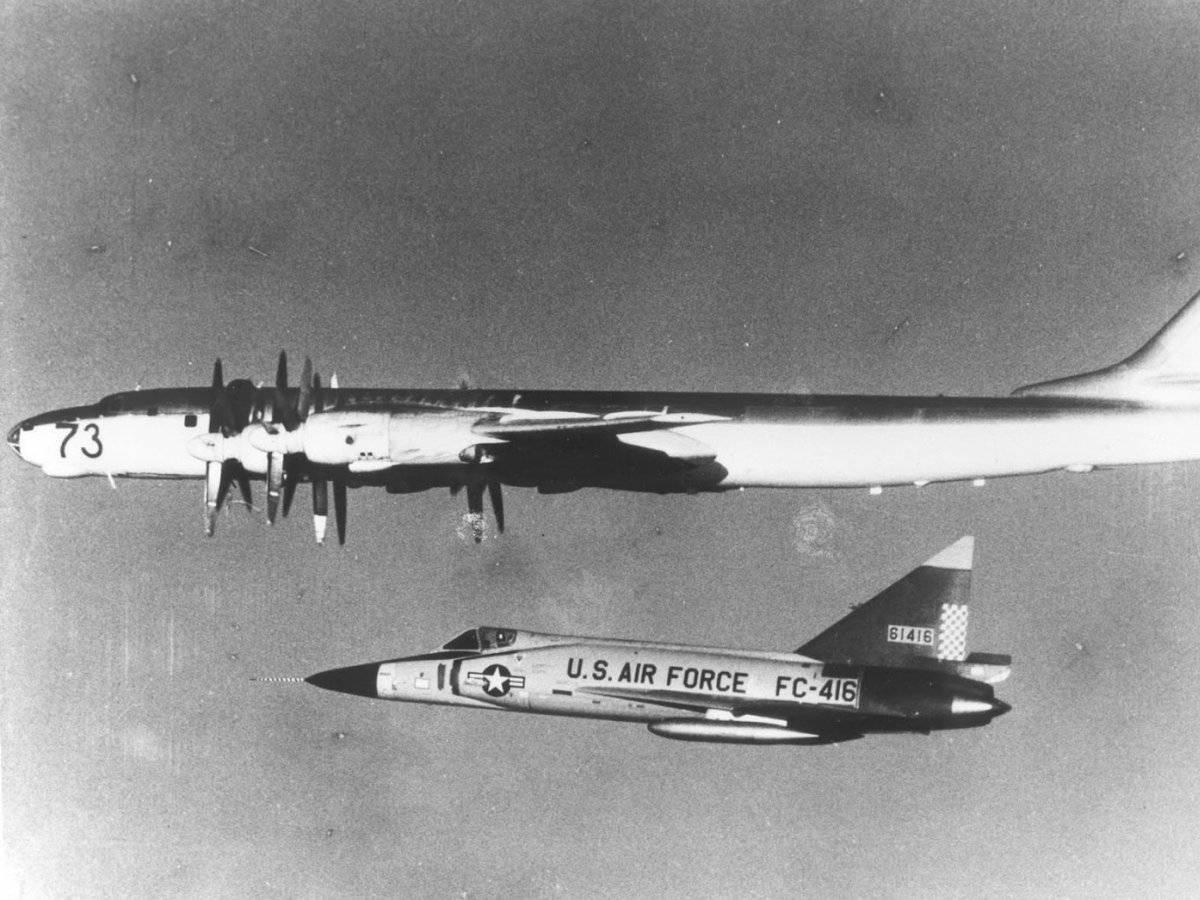

There was the F-4 Phantom, the A-7 Corsair, and the original F-14 Tomcat who intercepted the Bear in the 1960s, 1970s and into the 1980s.

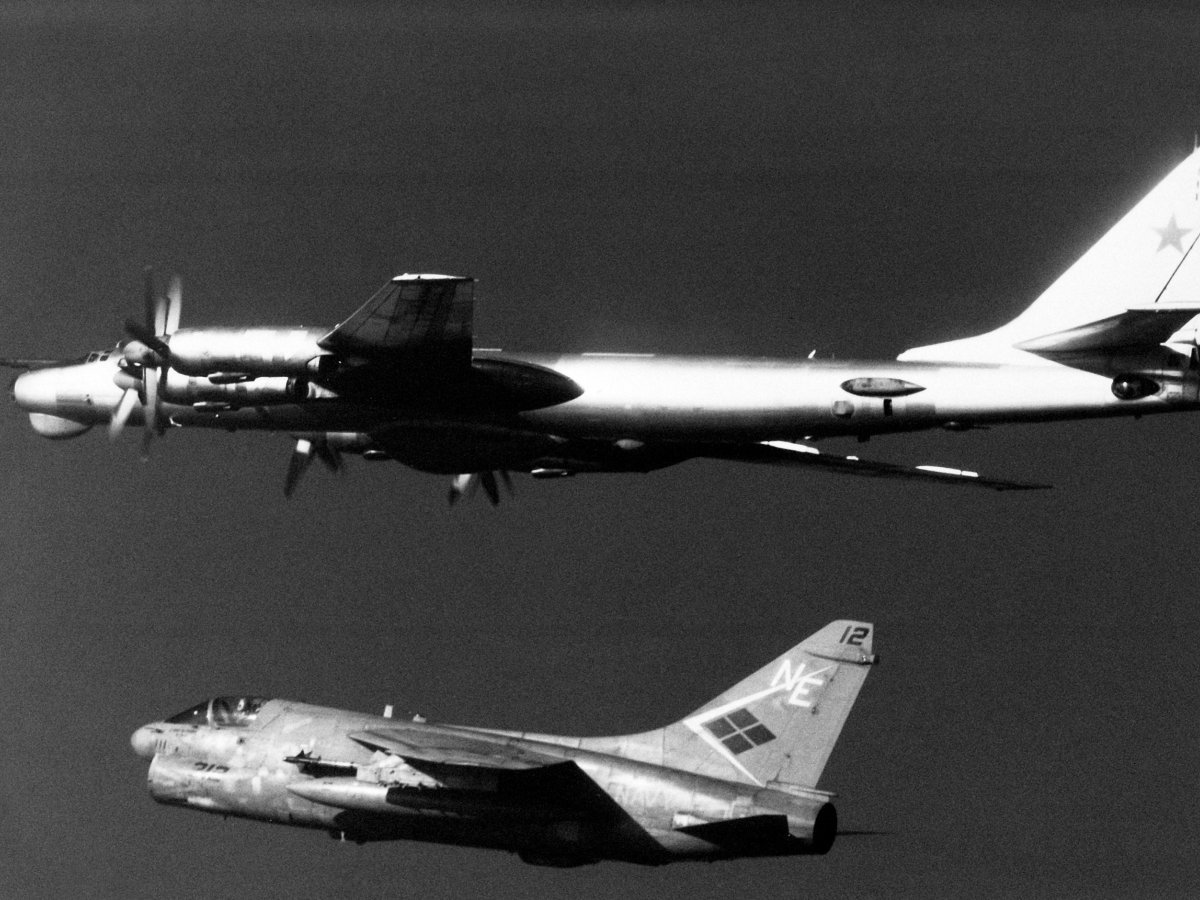
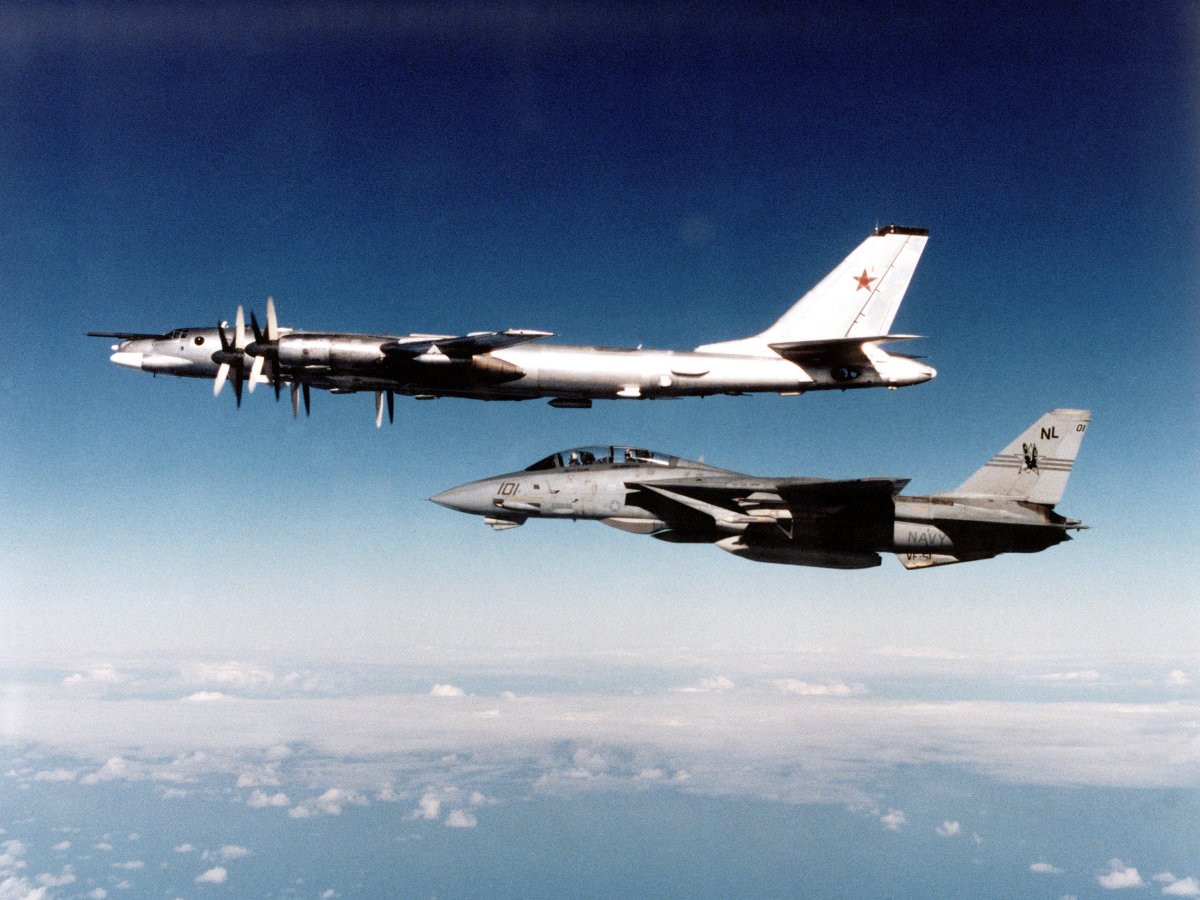
There is the F-18 Hornet and Super Hornet, the F-15 Eagle, who have intercepted the Bear in the 1990s and 2000s, and along with the F-22, who intercept the Bear today.


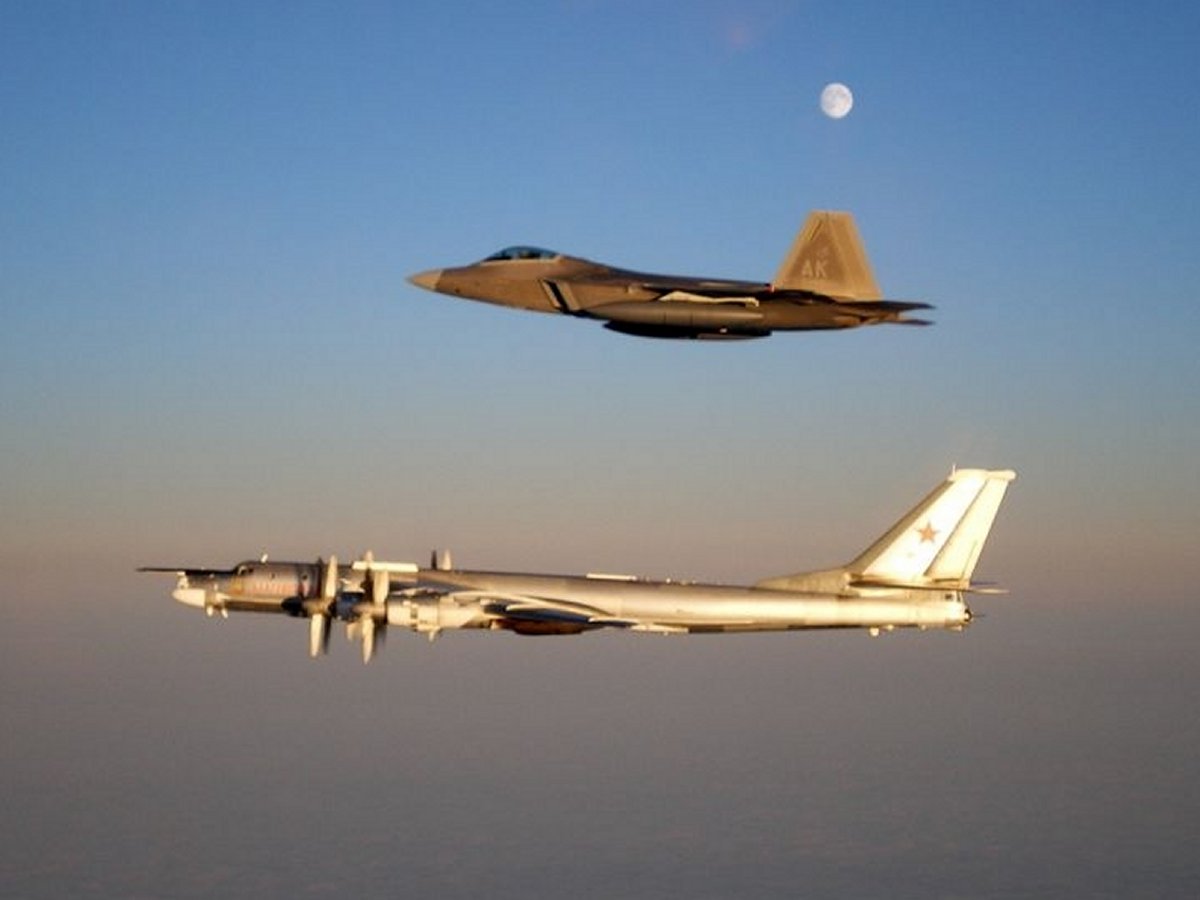
So, as you can see, this long-lived and long range Russian aircraft, thaty was originally buit under the Soviet Union, has persisted through to this day, and is still being intercepted by the latest US NAvy and US Air Force aircraft (along with NATO aircraft and PAcific allies aircraft) to this day. The grandsons of politos who intercepted the Bear in the 50s and 60s are now intercepting the bears today. As with the US Air Force B-52, in order to retain this ability, the aircraft have been upgraded over the years to keeep them relevant. The genius of their design has been that their basic airframes have allowed for this. The design bureau led by Andrei Tupolev designed the Soviet Union's first intercontinental bomber, the 1949 Tu-85, a scaled-up version of the Tu-4, a Boeing B-29 Superfortress copy.[3] The Soviet Union issued a new requirement for an intercontinetal bomber to both Tupolev and Myasishchev design bureaus in 1950. The aircraft would have to have an un-refueled range of 8,000 km and carry an 11,000 kg load to the target. Tupolev, who had built the Soviet Union's first intercontinental bomber, the Tu-85 (which was a scaled up, reverse engineered version of US B-29 bombers that had been forced to land in the sovet Union after damage over Japan), proposed an aircraft entiltled the Tu-95 Bear with four turboprops engines. These provided more power than the piston engines of the day, but wre not as fuel hungry as the jet engines available at the time. This would provide the power to carry the wieght needed, and the economomy to attain the range required. In July of 1951, the Soviet gvernment chose Tupolev's design for the new bomber. The four Kuznetsov coupled turboprops each featured two contra-rotating propellers of four blades each, producing a nominal 8,948 kW (12,000 eshp) power rating. This advanced turboprop engine was actually designed for the Soviets by a German prisoner engineers who had worked for Junkersbefore being captured. The aircraft had a conventional featuring a mid-wing cantilever monoplane wing with 35 degrees of sweep, an angle which ensured the main wing spar passed through the fuselage in front of the bomb bay. Retractable tricycle landing gear had their strut units retracting rearwards, with the main gear retracting into extensions of the inner engine nacelles. The first prototype Tu-95, first flew in November 1952, with initial engines designated 2TV-2F. After six months of testing, this aircraft suffered a propeller gearbox failure and crashed, killing the test pilot. The second aircraft, featured four new 12,000 ehp, Kuznetsov NK-12 turboprops, which proved more reliable than the 2TV-2F. After a successful flight testing phase, series production of the Tu-95 started in January 1956. Initially the Soviet Air force called the aircraft the Tu-20, but by the time it was being supplied to operational units it was already better known under the Tu-95 designation used internally by Tupolev, and the Tu-20 designation was dropped and changed to the Tu-95. The aircraft was originally produced to be a long range intercontinental bomber, and the first Soviet Tu-95 division, the 106th Heavy Bomber Air Division, was formed in 1956. The division commander was twice-Hero of the Soviet Union A. G. Molodchi. TThe 106th TBAD's base was Uzin near Kiev. The second, the 1223rd TBAP in Semipalatinsk, under the command of Hero of the Soviet Union Colonel V. M. Bezbokov, was raised in 1957. The 1223rd's targets were Canada and the northern part of the US. But as the US and the Soviet Union developed and then instituted long range jet bombers, and then particularly Intercontinental Ballistic Missiles (ICBMs) the use of the slow Bear for such missions quickly went obsoloete. However, the aircraft had such long range and good stability and hanling that it was also produced as a maritime patrol and bomber aircraft. This version, the Tu-95RT, which later would become the Tu-142, became a veritable icon of the Cold War as it performed a maritime surveillance and targeting missions for Soceit surface ships and submarines. Durubng the Cold war, most often it was this version being intercepted by US Naval aircraft. But the aircraft also continued to be used to test Soviet nuclear weapons. In 1961, a modified Tu-95 carried and dropped the AN602 bomb that was also called the Tsar Bomb. The bomb was attached underneath the aircraft, as it would not fit into the internal bomb-bay.This weapon yielded 50 mega-tons (compared to the largest US weapon ever tested, the B41 which yieklded 25 Mega-tons). The bomb was designated RDS-220 and was the biggest and most powerful thermo nuclear bomb ever made adn was detonated over Novaya Zemlya Island in the Russian Arctic Sea after being dropped by the Tu-95.
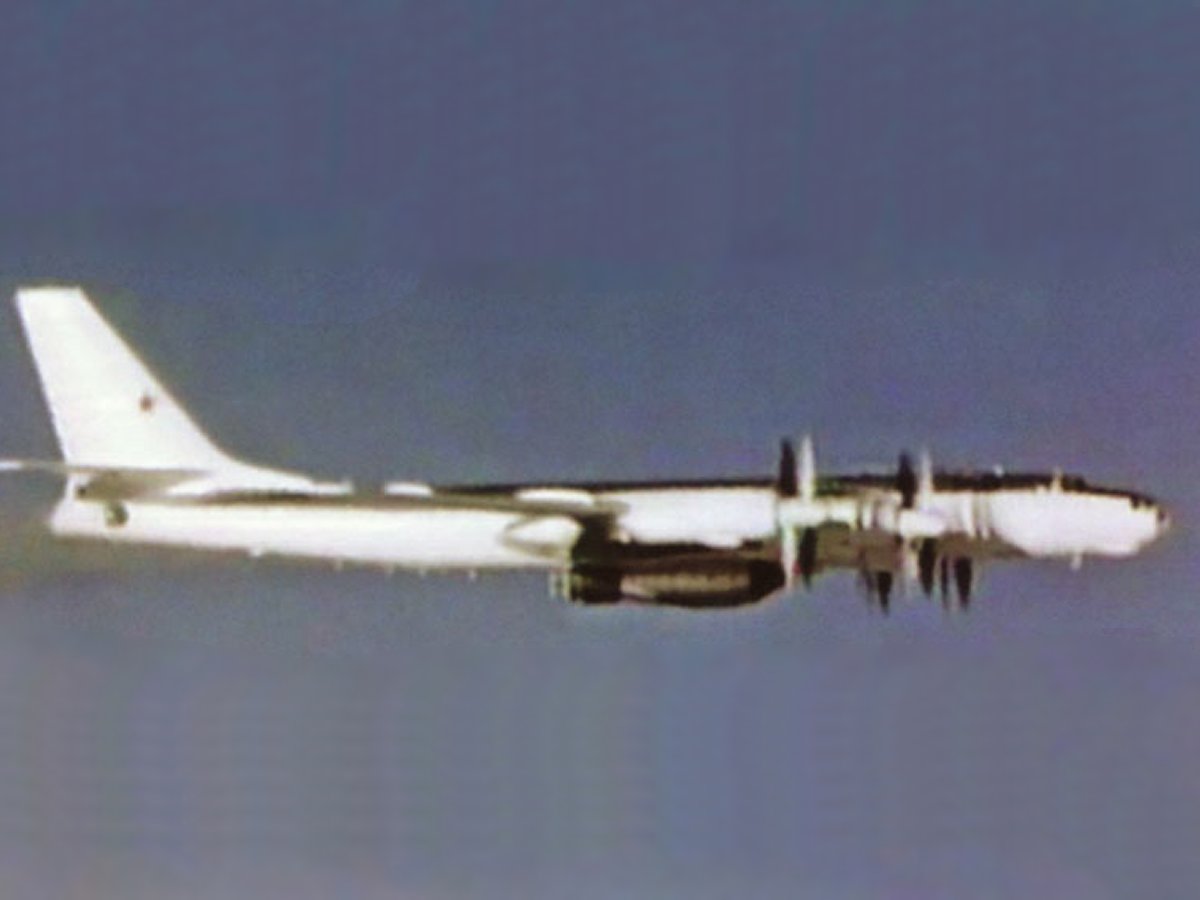
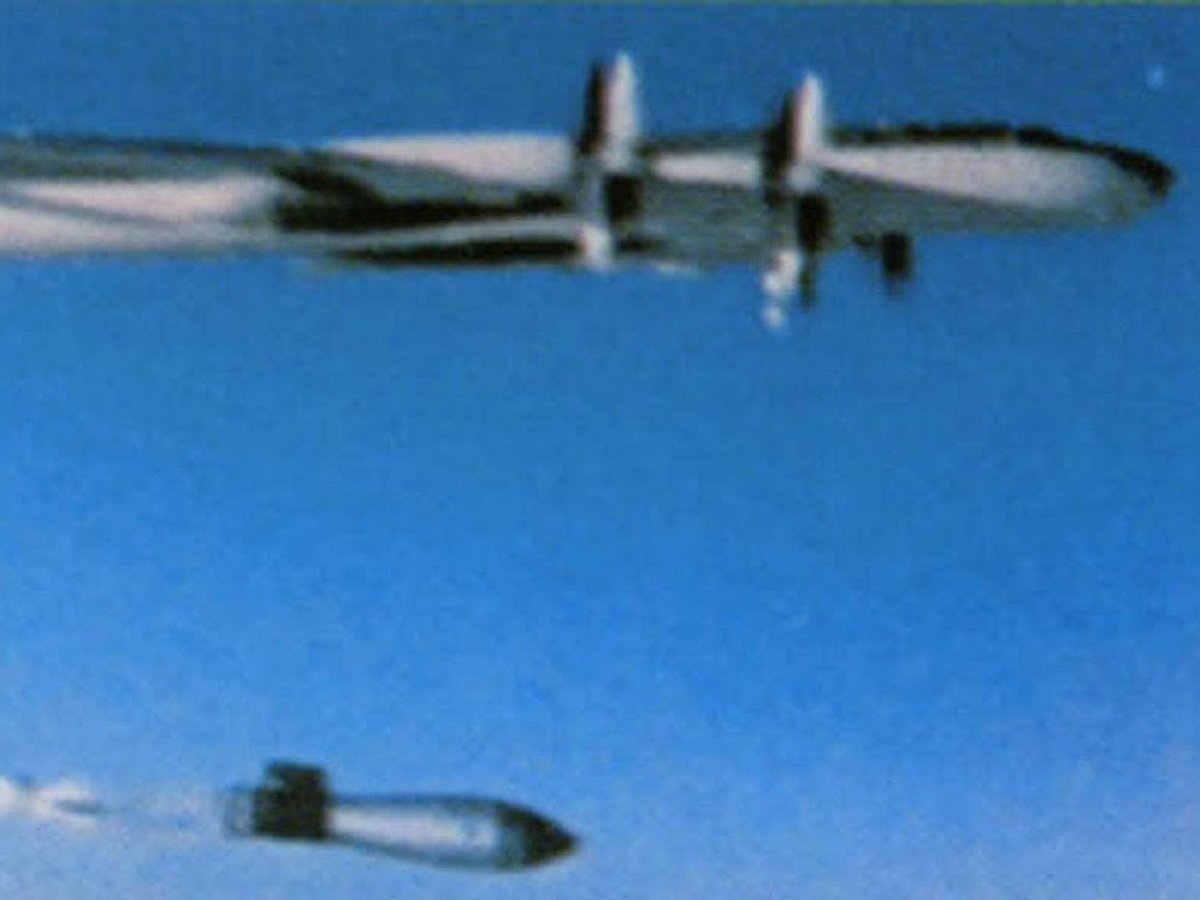
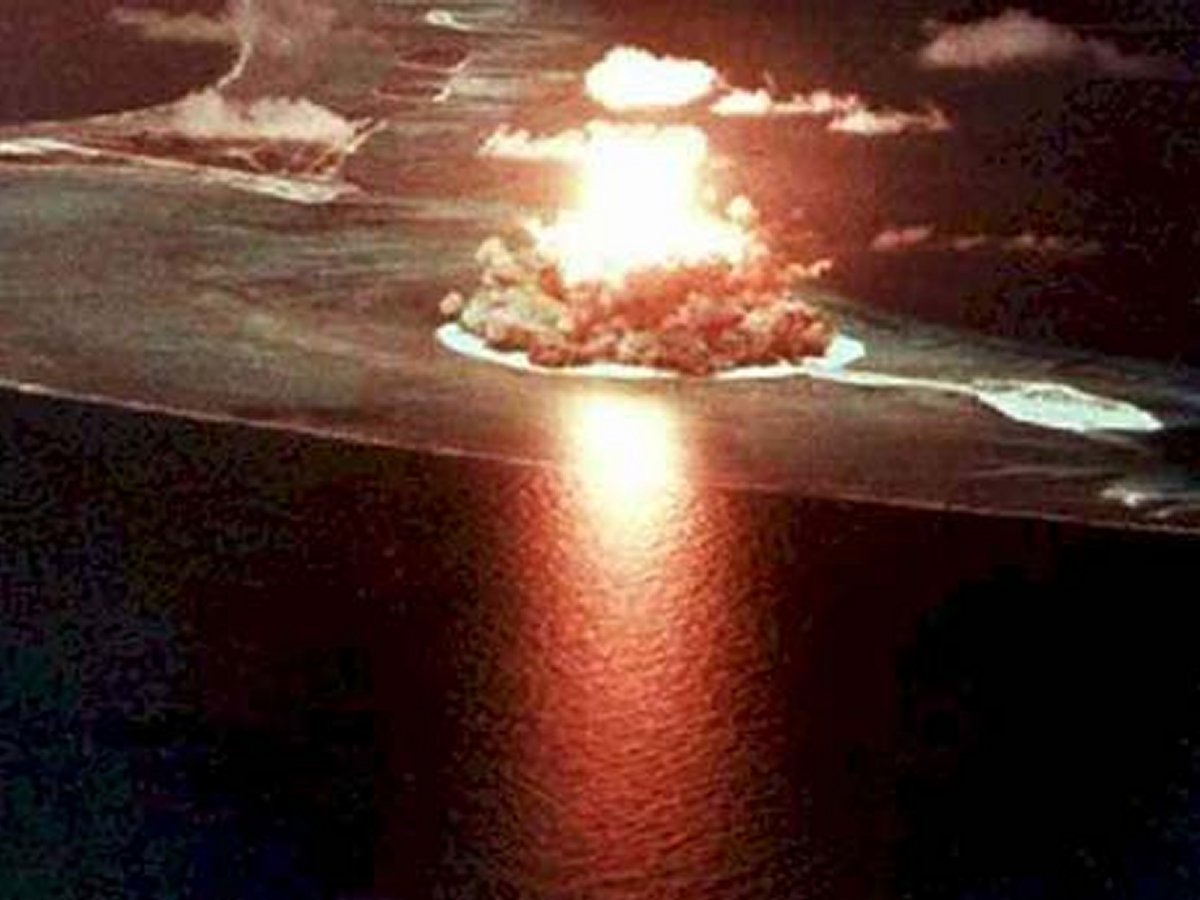
Altogether, over 500 aircraft were built between 1952 and 1994. The later versions have been modified, modernized and imporved. All Tu-95s now in Russian service are the new Tu-95MS variant, built in the 1980s and 1990s and based on the Tu-142. They continue to be improved. Although Tu-95 patrols looking at the western allies were suspended after the fall of the Soviet Union, In August 2007, President Vladimir Putin announced that Tu-95 patrols would resume. Now, once again, NATO and US fighters are seen intercepting Tu-95s as they perform their missions along the periphery of NATO and US airspace. Sometimes Tu-95s act in concert with Tu-22M3 Backfire strategic bombers and Russain airborne early-warning aircraft. During the Russian Stability 2008 military exercise in 2008, Tu-95MS aircraft fired live air-launched cruise missiles for the first time since 1984. The long range of these Raduga Kh-55 cruise missile means Tu-95MS Bears can once again serve as a strategic weapons system, and act in that role similar to the continued service of B-52 bombers. In November 2015, Tu-95 MS aircraft had their actual combat debut being employed in long range airstrikes as part of the Russian military intervention in the Syrian Civil War. The sensors, avionics, and weapons systems of the Tu-95 MS aircraft are modern and capable. Although the aircraft themselves are relatively slow, they have long range and can fly in clse enough to launch their cruise missiles against opposition who have strong air defense systems, eitgher in the air or on the ground. Against less capable opponents, they can carry arious types of ordinance from shorter range missiles to iron bombs. Currently a total of 63 Tu-95 MS aircraft are availble for the Russian Air Force and BNavy. 55 of them are maintained in a ombat ready status. Charcteristics/Specifications:
Crew: 6–7; pilot, co pilot, flight engineer, communications, navigator (2), gunner What's in the Box - December 24, 2015 Trumpeter makes some of the best scale models on the planet, both ships (particularly 1/350 scale) and aircraft (particularly 1/72 scale). This model of the Tu-95MS is no exception and is just an awesome model with very well molded and detailed parts, excellent instructions, excellent decals, and an excellent full color painting guide. There are eight sprues molded in light gray and one sprue molded in clear plastic for the canopy. The fuselage comes in four pieces. Altogther there are right at 200 pieces to the aircraft. This is a large model so you will have to have room to display it. Although the bomb bays can be shown open, the newer rotary launcher and cruise missiles are not cinluded with this kit (that innovation being newer thant he design of the kit) and the new pylons and wing mounted cruise missiles are also not available. I hope to eithe rfind and puchase the proper 1/27 scael Russian weapons, and/or scratch build the pylons and rorary launcher. we will have to see while building how that goes. Instructions are very good, and the decals are also good, but not super detailed, although there are decals for either Russian or Ukrainian aircraft. I intend to build the Russian aircraft and will probably buy after market decals for more detail. Painting schemes comes in full color glossy. Very nice. Here is the model with its box, the parts, the decals and the instructions:


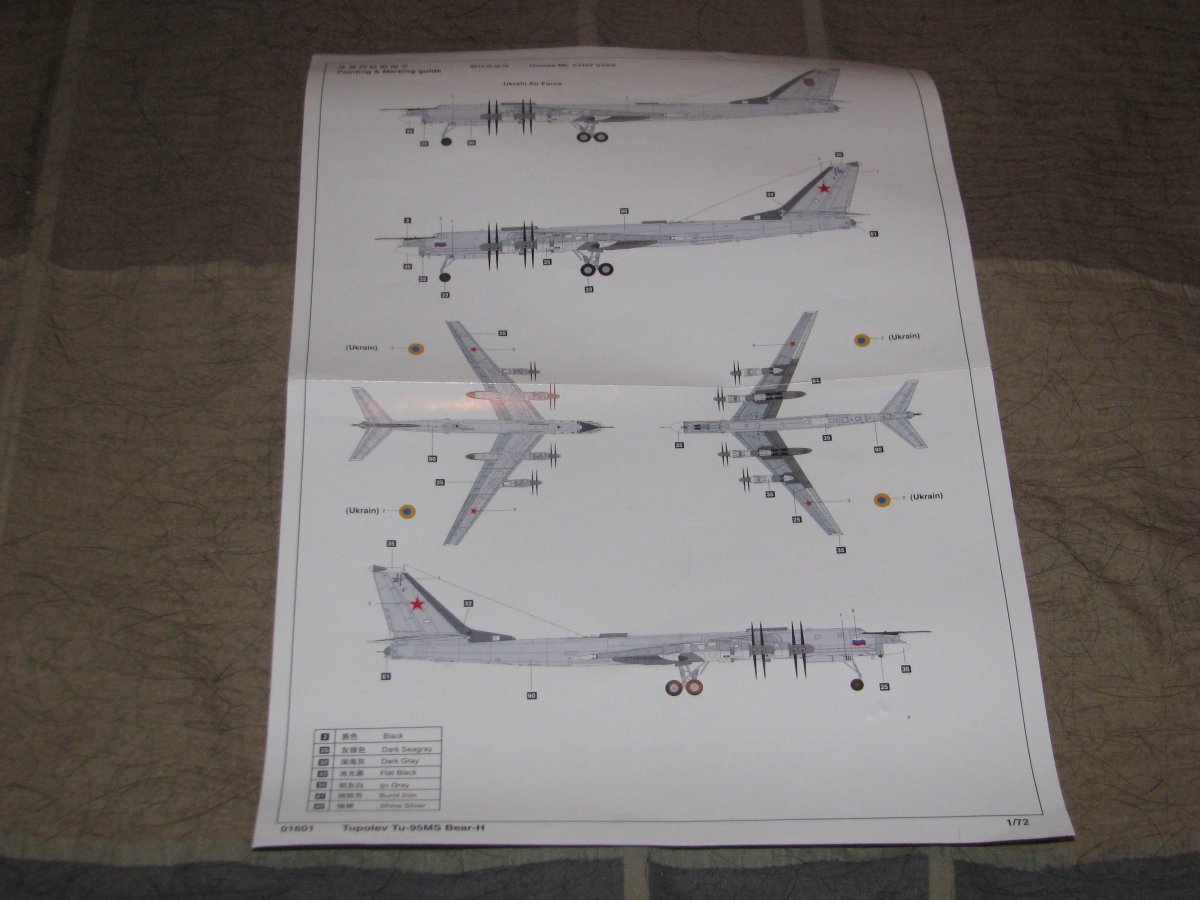
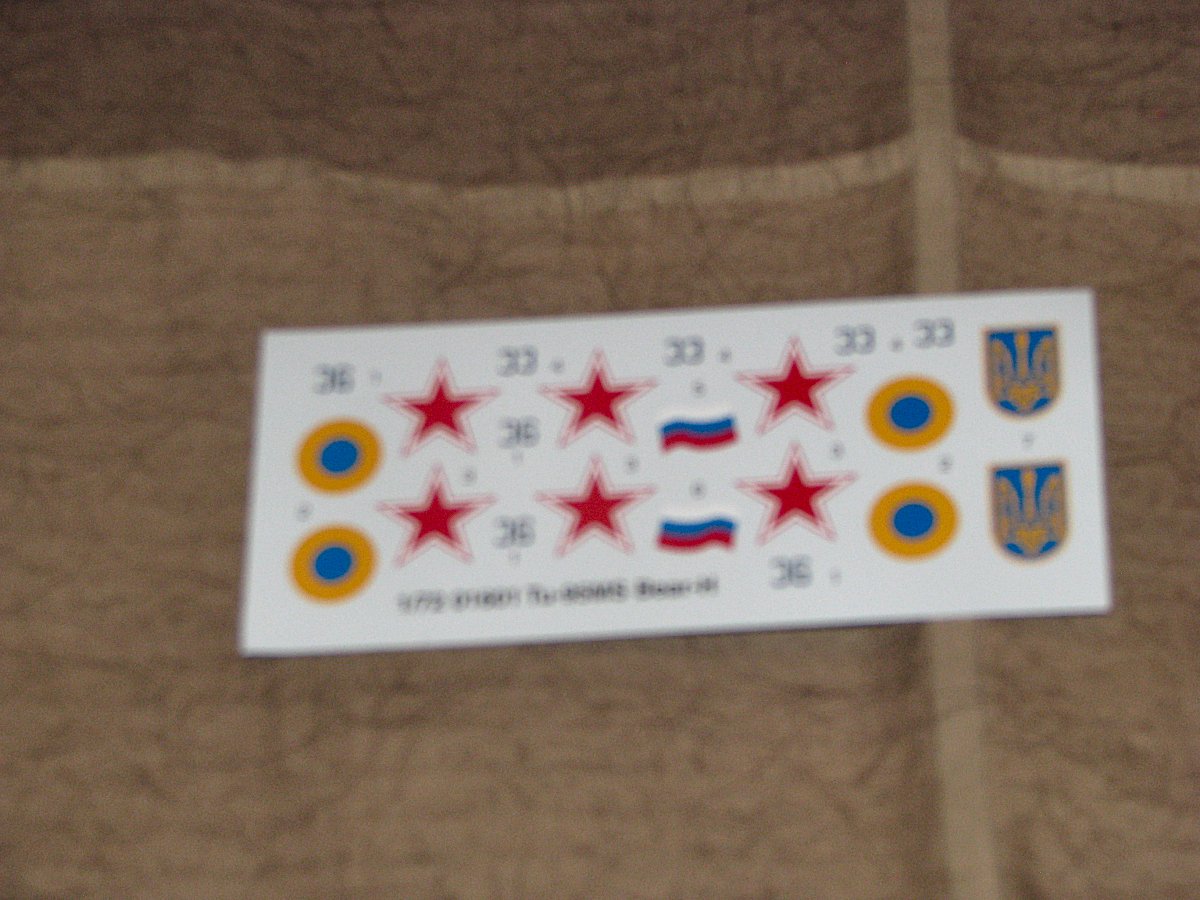
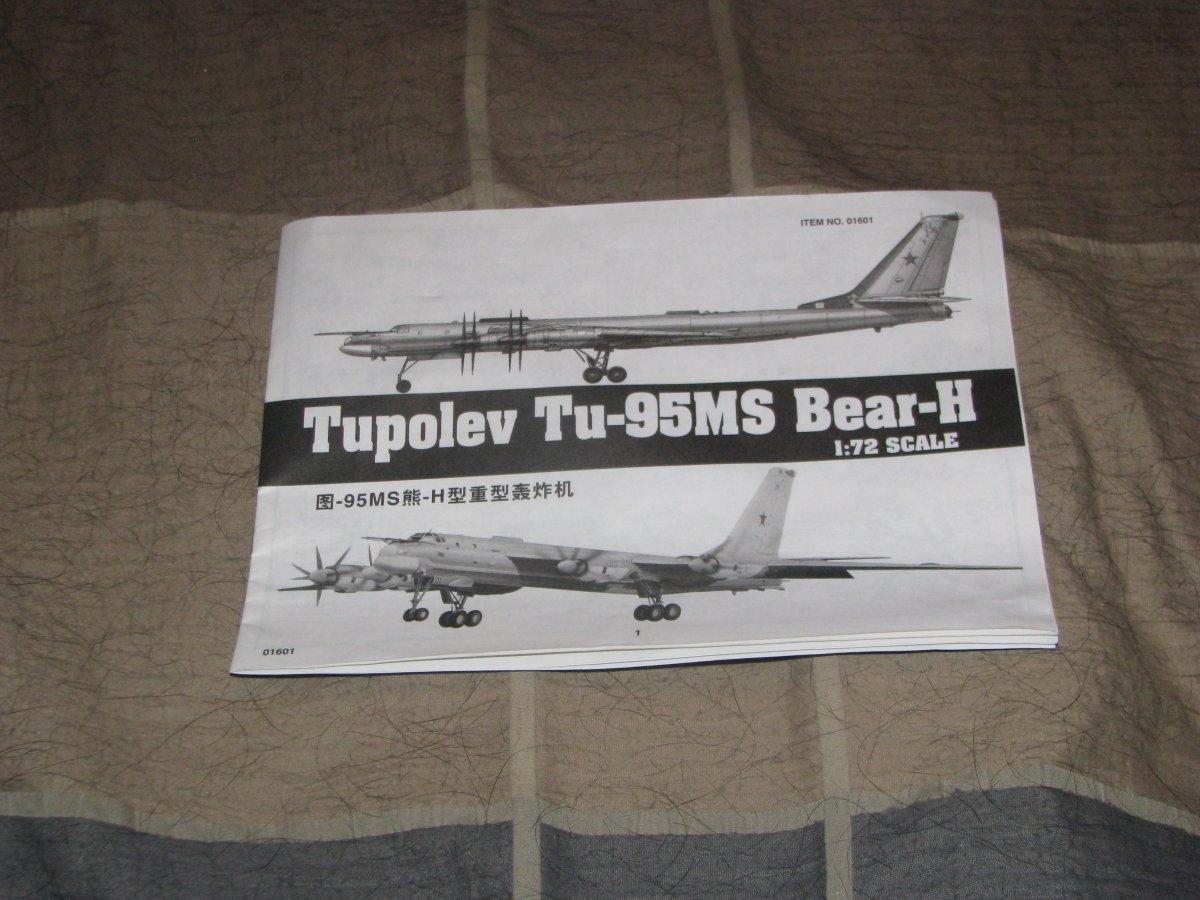


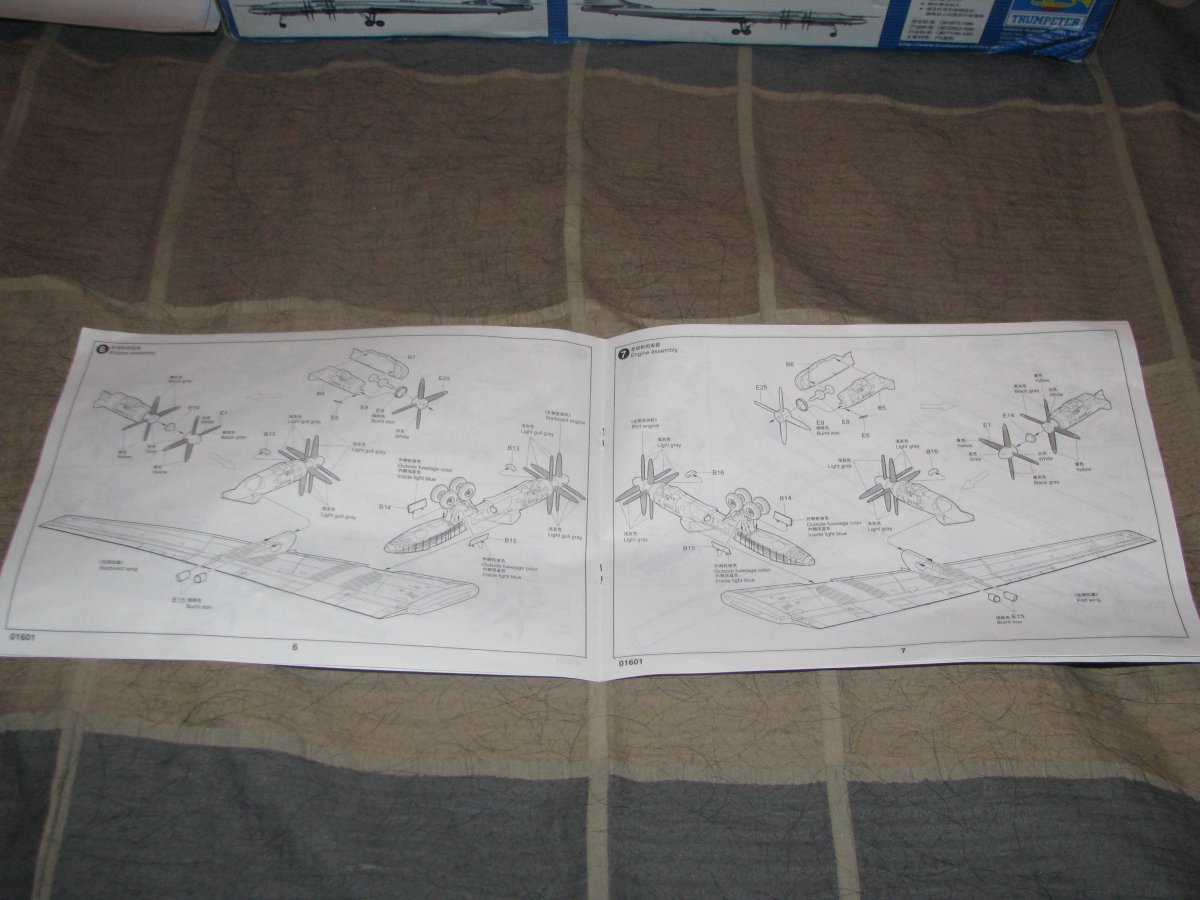

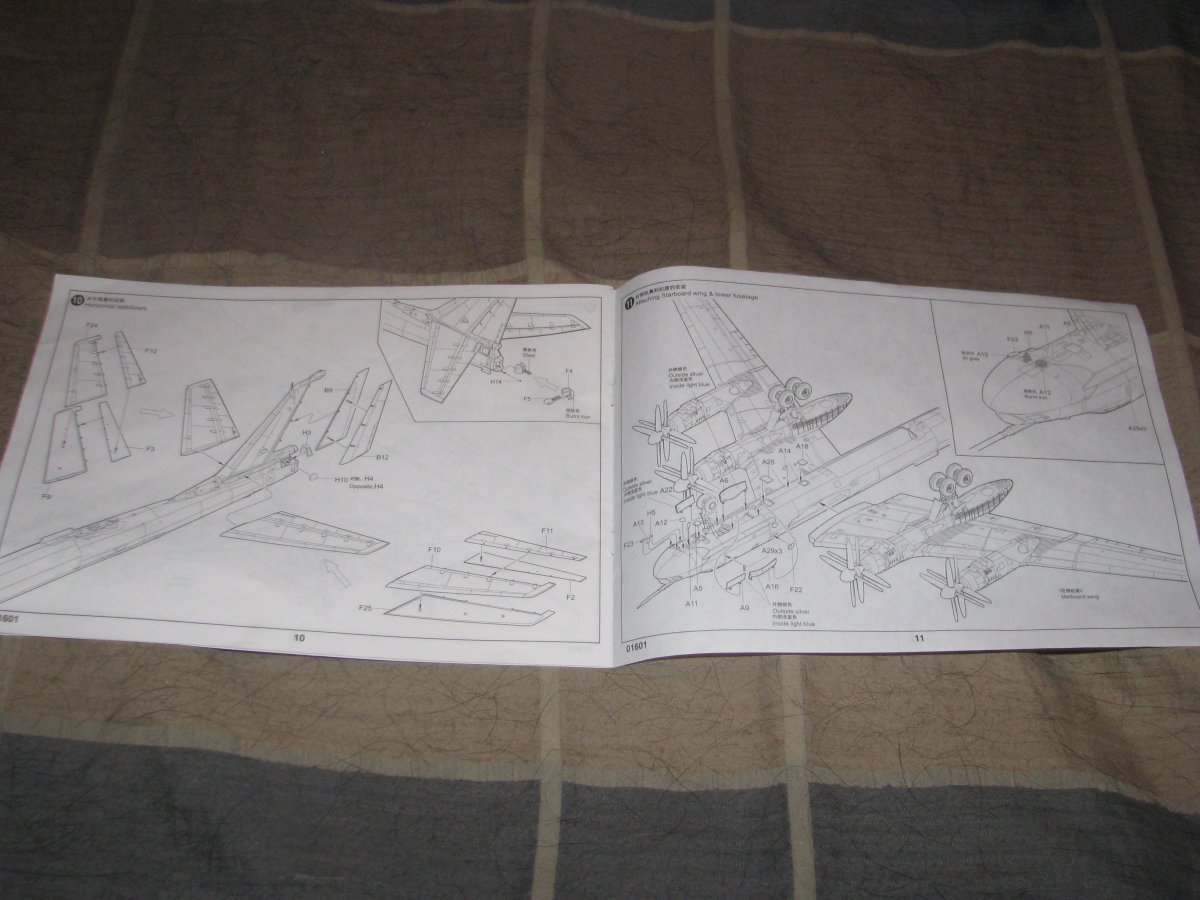
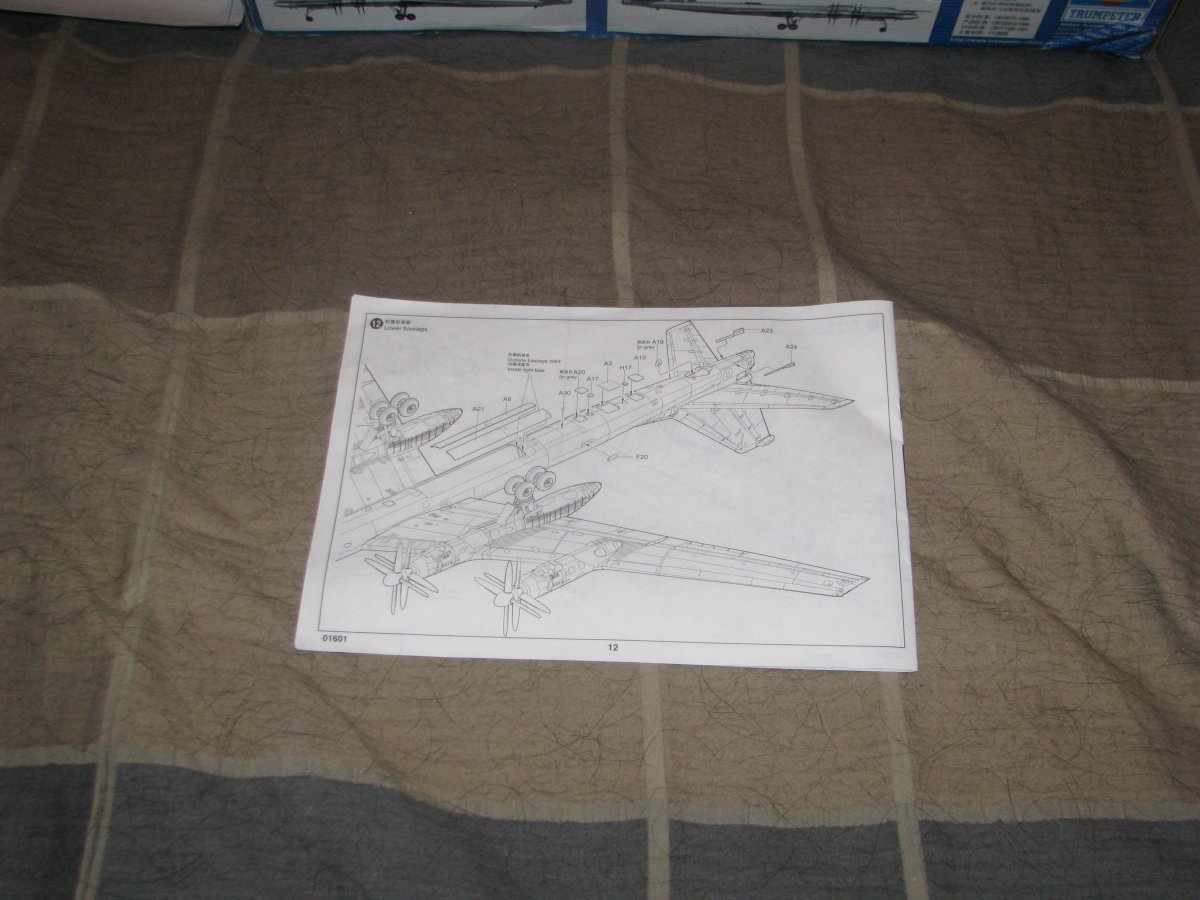
This should be a really fun build. I have always thought this aircraaft to be one of the best looking long-range, prop driven modern bombers.
The completion of the PLAN Carrier group was centered on the already completed Trumpeter's 1/350 scale PLA Navy's Aircraft Carrier CV-16, Liaoning, (in addition to the other escorts already completed) included Mini Hobby's's PLAN Guangzhou, DDG-168. I recently pre-ordered a 1/350 scale model of the PLAN Type 071 LPD, Yuzhao Class, announced by Trumpeter and due out in October, 2013. I will end up adding two of those, propbably LPD-998 Yuzhao and LPD-999, Jinggangshan, add the PLAN- DDG-139, Ningbo, and the PLAN DDG-115, Shenyang, along with the PLAN Weifang, FFG-550 and thus build a PLAN ARG. The completion of the US Carrier Strike group was centered on the completed Tamyia's 1/350 scale USS Enterprise, CVN-65, (in addition ot the other escorts already completed) included Trumpeter's, USS Freedom, LCS-1, Dragon's USS Preble, DDG-88 and Hobby Boss's USS Texas, SSN-775. When a 1/350 scale USS Enterprise, CVN-80 (or any Gerald R. Ford Class) is released from Trumpeter, Tamiya, Dragon, or whomever else, I will add it to this group along with another AEGIS Cruiser. Whichever Ford Class coms out in 1/350 scale, I will build it as the USS Enterprise, CVN-80. The US ARG will include Tamiya's 1/350 scale, USS Iowa, BB-62 (which I have already completed), Trumpeter's 1/350 scale USS Iwo Jima LHD-7, Gallery's 1/350 scale USS Sommerset, LPD-25, Bronco Models 1/350 Scale USS New York, LPD-21, Cyber Hobby's USS Independence, LCS-2, Acadamy's 1/350 scale USS Rueben James, FFG-57, and another Flight IIA US AEGIS class detroyer based on Trumpeter's 1/350 scale USS Lassen, DDG-82...all of these models which I already own. The completion of the UK Group featured the Airfix 1/350 scale HMS Illustrious, R06 as its centerp[iece until a 1/350 scale Queen Elizabeth carrier is released. When that happens, I will add that carrier to the group as its centerpiece. The Royal Navy CSG will also include two Airfix 1/350 scale Daring Class DDGs (one of which is already completed), two Trumpeter 1/350 scale Type 23 HMS Duke class Frigates (one of which is already completed), and the Hobby Boss 1/350 scale HMS Astute SSN (which is also already completed) and Airfix 1/350 scale HMS Tragalgar SSN. One day, when a 1/350 scale HMS Ocean LPD come out, I will use tt to start building a Royal Navy ARG. The Russian CSG was completed and is centered on Heller's 1/400 scale Charles De Gualle, R91. I also built the 1/400 scale Heller Russian De Grasse, D612 DDG, which is an ASW DDG, and the Russian Aconit D612 FFG and Gueprattet F714 FFGs, both of which are Lafayette class frigates. These four vessels round out my Russian CSG. As soon as a Russian Robin class nuclear sub, like the Russian Perale S606 SSN is released in 1/350 or 1/400 scale, I will add that to the group. Also as soon as the Forbin D620, Horizon class anti-air DDG is released in 1/350 or 1/400 scale, I will purchase it and add it to the CSG. One day, when the models come out, I will purchase two 1/350 scale Mistral Class LPDs so I can create a Russian ARG with those vessels. The completion of the Japanese JMSDF group was centered on Fujimi's very finely detailed, 1/350 scale Hyuga, DDH-181. It will be escorted by Trumpeter's 1/350 scale DDG-177, Atago, an AEGIS class DDG and the JMSDF, DDG-174, Kongo class (which I own), Trumpeters's 1/350 scale DDG-114 Susunami and DDG-111 (both of which are Takinami Class DDGs which I own), and by the 1/350 scale SS-503 Hakuryu (which I own), one of Japans new, very modern and capable AIP Diesel Electric submarines. As soon as a DDG-115 Akizuki in 1/350 scale is released, I will add it to this group. Should a 1/350 scale Osumi Class LPD be relased, I will buy two of those vessels and create a JMSDF ARG. The completion of the Russian CSG (centered on Trumpeter's Kuznetsov which I own) the Russian Kirov Class nuclear battle cruiser (CGN), the Peter the Great, by Trumpeter (which I own), the Russian Slava Class cruiser, Varyag by Trumperter, a Trumpeter 1/350 scale Udaloy DDG, Hobby Boss's Akula II class SSN, the new Yasen class Russian SSN, and the Zevzda Oscar II SSGN, all in 1/350 scale. Recently I purchased Heller's 1/400 scale Foch, the Clemceau Class carrier that was sold to the Brazilians in 2000 and in 2002 was refitted and became the Brazilian CV, Sao Paulo, using steam catapaults. I built the model as the Sao Paulo and thus started a Brazilian group. I will need to find a 1/350 scale Type 22 DDGs and the FFGs the Brazilians use which are not available at present. I did purchased a set of 1/400 scale A-4 Skyhawks and S-3 Trackers and built those as a suitable airwing for the Sao Paulo. Then, again, once the models are available, I'd like to build an Italian Carrier Strike Group centered on the Cavour and their Horizon DDGs, a Spanish Carrier Strike Group centered on the Juan Carlos and their F-100 AEGIS FFGs, and ultimatly an Australian Strike Group centered on the new Canberra Class LPD and the Hobart class AEGIS DDGs. If they ever build the models, an Indian Carrier Strike Group centered on either the Vikramaditya or their new ADS Carrier, the Vikrant, and their Kolkata class DDGs and Shivlak class FFGs would also be nice. Years more worth of work! You can see all of these actual carriers, read their histories and specifictions at my site: ...and most of their surface escorts at: AEGIS AND AEGIS-LIKE VESSELS OF THE WORLD
|
FINE ALL-AMERICAN, LIBERTY ORIENTED BOOKS AUTHORED BY JEFF HEAD
BACK TO JEFFHEAD.COM
Copyright © 2015 by Jeff Head, All Rights Reserved
